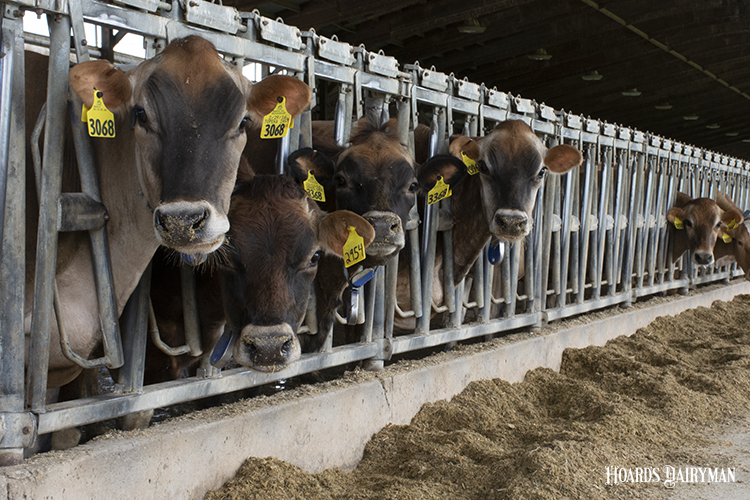
When designing a barn for voluntary milking systems or robots, one big decision is how many cows can be milked per machine. With simple math, one can determine the number of cows that could theoretically be milked per robot per day, but it is very likely these theoretical numbers won’t be achieved in real life.
“We forget that cows aren’t robots, they are cows,” said Nigel Cook, MRCVS, during a recent Dairyland Initiative workshop. “There are periods of the day when cows are more motivated to milk at the robot, and there are periods when they are less motivated.”
Cook, a professor with the University of Wisconsin-Madison School of Veterinary Medicine, said that cows can be motivated to access the robot by the timing of fetching or equipment wash-up periods. They also tend to like milking at dusk and dawn, with reduced activity usually seen in the early morning and midday.
“Cows have distinct behavioral patterns,” he said. “Their desire to be milked is not constant throughout the day.”
He recommended making adaptions to fetch cows when robot activity is typically lower, and he said washing may best be done in the early morning when most cows are sleeping.
He said there is no researched threshold of how many cows should be milked per robot, and a wide range of use is reported. In a survey of farms, their Dairyland Initiative group found an average of 53 to 70 cows per robot, with an average of 61.
“What is clear is that as you increase number of cows per robot, you will decrease robot visits overall and increase fetch rates,” he stated.
Cook said that cow behavior will dictate actual visit frequency. Using the robot herds that are the highest performing in our industry as a reference point, Cook said their veterinary group would suggest planning for 55 cows per robot.
Another area that has been researched very little is the impact of robots per pen. Cook shared one study that found more milk per robot when there was were multiple milking systems in the pen.
“That makes a lot of sense to us,” Cook said. Having at least two robots per pen gives maintenance options, it gives cows a choice of which robot to use, and it provides more milking opportunities for subordinate cows, especially in mixed parity groups. Cook said they are seeing many U.S. barns being designed with two or three robots per pen.








